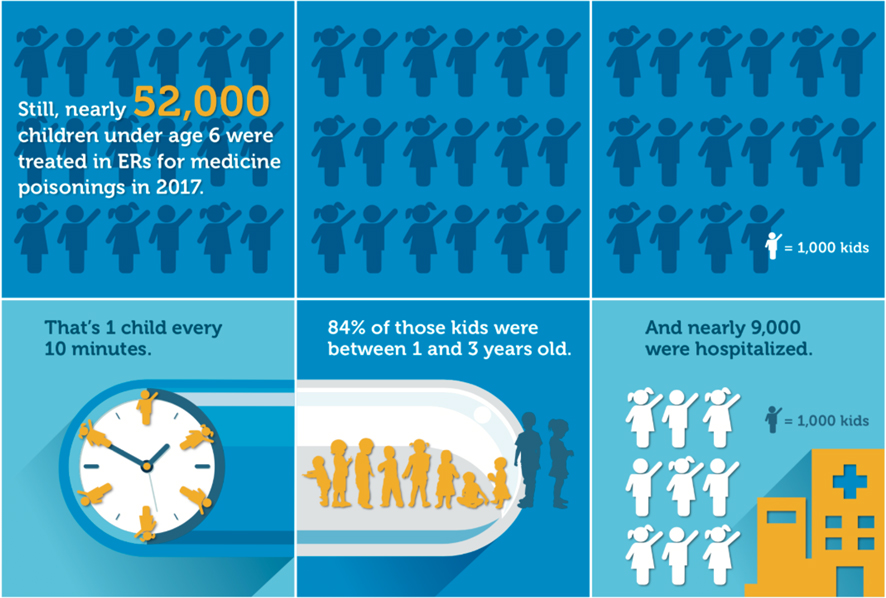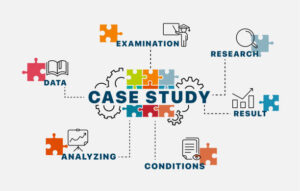THE IMPORTANCE OF MEDICATION SAFETY FOR CHILDREN
Uncategorized Pharmacy
Medication safety for children is a critical aspect of healthcare, as it directly impacts their well-being and overall health. Ensuring the proper use and storage of medications is essential to prevent accidental poisonings, adverse reactions, and other potential risks. Here are some key reasons highlighting the importance of medication safety for children.
1. Vulnerability to Medication Effects:
Children’s bodies are still developing, and they may react differently to medications compared to adults. Dosages that are safe for adults may be too strong for children, leading to adverse effects or toxicity.
2. Limited Ability to Communicate:
Young children may have difficulty expressing how they feel or identifying adverse reactions to medications. This makes it challenging for caregivers and healthcare professionals to assess the impact of medications without close monitoring.
3. Risk of Accidental Poisoning:
Children are naturally curious, and they may be tempted to explore and taste various items, including medications. Poorly stored medications or those left within reach can lead to accidental ingestions, posing a serious risk to a child’s health.
4. Dosing Challenges:
Administering the correct dosage for children can be challenging, especially when medications come in various forms (liquid, tablets, etc.). Errors in dosing can occur, leading to under-treatment or over-treatment.
5. Interaction with Other Medications:
Children may be on multiple medications simultaneously, increasing the risk of drug interactions. Healthcare providers must be aware of potential conflicts and adjust treatment plans accordingly.
6. Educational Gaps:
Parents and caregivers may not always be fully informed about the medications their children are prescribed. Lack of understanding about proper administration, potential side effects, and the importance of completing the full course of medication can impact treatment effectiveness.
7. Proper Storage and Handling:
Medications should be stored securely, out of the reach of children, and in a location where temperature and humidity are controlled. Improper storage can lead to degradation of the medication’s effectiveness or, in some cases, increased toxicity.
8. Allergic Reactions:
Children, like adults, can have allergic reactions to medications. Monitoring for signs of allergies, such as rash, swelling, or difficulty breathing, is crucial for ensuring prompt medical attention if needed.
9. Role of Healthcare Providers:
Healthcare professionals play a crucial role in educating parents and caregivers about medication safety. Clear and thorough communication about dosage instructions, potential side effects, and what to do in case of an emergency is essential.
10. Advancements in Pediatric Medications:
The field of pediatric pharmacology is evolving, with ongoing efforts to develop medications specifically tailored to children. This highlights the importance of research and development to improve the safety and efficacy of medications for pediatric use.
Side effects of medicine on children:-
The side effects of medicine on children can vary widely depending on the specific medication, the child’s age, weight, overall health, and how their body responds to the medication. It’s crucial to consult with a healthcare professional, such as a pediatrician, who can provide personalized advice based on the child’s individual circumstances.
Common side effects of medications can include:
1. Nausea and vomiting: Some medications may cause gastrointestinal discomfort, leading to nausea or vomiting.
2. Drowsiness or fatigue: Certain medications may cause drowsiness, affecting a child’s alertness and energy levels.
3. Allergic reactions: Children can experience allergic reactions to medications, including rashes, itching, swelling, or difficulty breathing. Seek immediate medical attention if these symptoms occur.
4. Digestive issues: Medications can sometimes disrupt the normal functioning of the digestive system, leading to diarrhea or constipation.
5. Behavioral changes: Some medications may affect a child’s mood or behavior. They could become more irritable, anxious, or experience changes in sleep patterns.
6. Headaches or dizziness: Certain medications may cause headaches or dizziness in some children.
7. Changes in appetite or weight: Medications may influence a child’s appetite, leading to changes in eating habits and potential weight fluctuations.
8. Effects on growth and development: In some cases, medications may impact a child’s growth and development. It’s essential to monitor these aspects, especially in long-term medication use.
9. Liver or kidney problems: Some medications can affect the liver or kidneys, so regular monitoring of these organs may be necessary.
It’s crucial for parents and caregivers to communicate openly with healthcare professionals about any concerns or observed side effects. They should follow prescribed dosages, inform the healthcare provider about any existing medical conditions or allergies, and report any unusual symptoms promptly. In some cases, adjustments to the medication or alternative treatments may be recommended. Always consult with a healthcare professional for guidance specific to a child’s situation.
Role of healthcare provider in children medication safety:-
Healthcare providers play a crucial role in ensuring the medication safety of children. Here are some key aspects of their role:
1. Accurate Diagnosis and Prescription:
Healthcare providers must accurately diagnose the child’s condition and prescribe appropriate medications based on the diagnosis.
Consideration should be given to the child’s age, weight, and medical history when determining the dosage and type of medication.
2. Education and Communication:
Providers should educate parents or caregivers about the prescribed medication, including its purpose, correct dosage, potential side effects, and any necessary precautions.
Clear and effective communication is essential to ensure that parents understand how to administer the medication correctly.
3. Dosage Calculation and Adjustments:
Healthcare providers are responsible for calculating and prescribing the correct dosage for a child. Dosages often need to be adjusted based on the child’s age, weight, and overall health.
Providers should provide clear instructions on how to measure and administer the medication accurately, especially for liquid medications.
4. Monitoring and Follow-Up:
Regular monitoring of the child’s response to the medication is important to ensure its effectiveness and to identify any adverse reactions promptly.
Follow-up appointments allow healthcare providers to assess the child’s progress, make adjustments to the treatment plan if necessary, and address any concerns or questions from the parents or caregivers.
5. Allergy and Interaction Screening:
Healthcare providers need to be diligent in screening for potential allergies to medications and considering possible drug interactions, especially if the child is taking multiple medications.
Communication with other healthcare providers involved in the child’s care is important to prevent adverse reactions due to medication combinations.
6. Promoting Safe Medication Storage:
Healthcare providers should advise parents and caregivers on the importance of storing medications safely, away from the reach of children, to prevent accidental ingestion.
7. Advocacy for Pediatric Medication Safety:
Healthcare providers can advocate for policies and practices that enhance pediatric medication safety at both institutional and community levels.
Staying informed about the latest research and guidelines related to pediatric medications helps providers stay current in their practice.
8. Emphasizing Adherence:
Providers play a role in emphasizing the importance of medication adherence to parents or caregivers. They should address any concerns or challenges that may impact adherence and work collaboratively to find solutions.
By fulfilling these roles, healthcare providers contribute significantly to ensuring the safe and effective use of medications in children. Collaboration between healthcare providers, parents, and caregivers is crucial to promoting a culture of safety around pediatric medication administration.
Dosage challenges for children:-
Dosage challenges for children can arise due to several factors, including their smaller size, differences in metabolism, and varying age groups. Ensuring accurate and safe medication administration to children requires careful consideration of these factors. Here are some dosage challenges and considerations:
1. Weight-based dosing: Children come in different sizes and weights, so medication dosages are often calculated based on weight. This requires accurate and up-to-date information on the child’s weight. Using age alone may not be sufficient, especially in situations where there is a wide range of weights within a particular age group.
2. Age-specific formulations: Some medications are available in different formulations suitable for specific age groups. For example, liquid formulations may be more appropriate for younger children who may have difficulty swallowing pills.
3. Liquid medication concentrations: Liquid medications can come in different concentrations, making it crucial to carefully measure and administer the correct volume. Parents and caregivers should use the provided measuring devices and not household spoons to avoid dosage errors.
4. Changing metabolism with age: Children’s metabolism can change as they grow, affecting the absorption, distribution, metabolism, and excretion of medications. Dosages may need adjustment as children age, and healthcare providers should be involved in monitoring and adapting prescriptions.
5. Compliance and taste: Children may resist taking medications due to taste or texture. This can lead to non-compliance, making it challenging to ensure they receive the proper dosage. Some medications come in flavored forms to make them more palatable.
6. Communication with healthcare providers: It’s essential for parents and caregivers to communicate effectively with healthcare providers, providing accurate information about the child’s health, any other medications they may be taking, and any known allergies. This helps healthcare providers make informed decisions about appropriate dosages.
7. Over-the-counter medications: Parents and caregivers should be cautious when administering over-the-counter medications, as these may not always be suitable for all age groups. Following age-appropriate guidelines and consulting with a healthcare professional if in doubt is crucial.
8. Educating parents and caregivers: Healthcare professionals should provide clear instructions to parents and caregivers regarding proper dosage administration. This includes explaining the importance of following prescribed doses, understanding potential side effects, and seeking medical advice if there are concerns.
In all cases, it is crucial for parents and caregivers to consult with healthcare professionals before giving any medication to children, and they should never adjust dosages without proper guidance. This ensures that medications are administered safely and effectively based on the child’s specific needs.
Future scenario regarding safety of children medication:-
In a future scenario regarding the safety of children’s medication, we can anticipate several advancements and improvements aimed at ensuring the well-being of young patients. Here are some potential developments:
1. Personalized Medication Dosages:
Advances in pharmacogenomics may allow for more personalized medication dosages based on a child’s genetic makeup. This could reduce the risk of adverse reactions and improve the effectiveness of treatments.
2. Smart Packaging and Dosing Devices:
Medication packaging may incorporate smart technologies to ensure proper dosages. Smart pill bottles or dispensers could remind caregivers when it’s time for a dose, track medication adherence, and provide alerts for potential errors.
3. Connected Healthcare Ecosystems:
Integration of healthcare systems may enable real-time communication between healthcare providers, pharmacies, and caregivers. This could enhance coordination, streamline medication management, and facilitate quick responses to any safety concerns.
4. Advanced Drug Formulations:
o Pharmaceutical companies may develop more palatable and child-friendly drug formulations, such as flavored or dissolvable medications, to improve adherence and reduce the likelihood of resistance from children.
5. Blockchain for Medication Traceability:
The use of blockchain technology could be implemented to ensure the traceability and authenticity of medications. This would help prevent counterfeit drugs and enhance the overall safety and reliability of children’s medications.
6. Continuous Monitoring and Feedback Systems:
Wearable devices and sensors may be employed to continuously monitor a child’s health status and response to medication. This data could provide valuable insights into the effectiveness and safety of treatments.
7. Advanced Pediatric Pharmacovigilance:
Enhanced pharmacovigilance systems specifically tailored for pediatric medications may be established. This would involve comprehensive monitoring of adverse drug reactions and long-term effects in children, with a focus on rapid response and intervention.
8. Human-Machine Collaboration in Healthcare:
Integration of artificial intelligence and machine learning algorithms into healthcare systems could assist healthcare professionals in predicting potential safety issues, optimizing dosages, and providing timely recommendations for adjustments.
9. Global Standardization and Regulation:
Increased global collaboration may lead to more standardized regulations for pediatric medications, ensuring a higher level of consistency and safety across different regions.
10. Educational Initiatives for Caregivers:
There may be an emphasis on education and awareness campaigns for caregivers, healthcare professionals, and educators regarding the proper administration and storage of children’s medications, as well as potential risks and warning signs.
These potential future developments aim to create a safer and more efficient environment for the administration of medications to children, promoting their health and well-being. However, it’s essential to approach these advancements with a cautious and ethical mindset to ensure the highest standards of safety and efficacy.
Blockchain technology:
Selecting this concentration will help you sharpen your computer science, programming, and data
science abilities. It offers you a wide range of career opportunities, including those for data miners,
blockchain engineers, security specialists, and many more.
Conclusion:
A B. Tech in computer science engineering is a wise decision if you want to shape your future and
improve yourself. In addition to AI and data science, the Internet of Things, and bioinformatics, CSE has
a lot more for you to study. It also offers you a wide range of electives to pick from, giving you the
opportunity to explore a variety of job prospects in top-ranking industries with high incomes.
admin
Related Posts

Mastering the Art of Case Study Analysis
Case studies serve as microcosms of real-world scenarios, allowing individuals to apply theoretical knowledge to practical situations. For fresh graduates and postgraduates stepping into the professional world, the skill of solving case studies is pivotal, often tested in interviews and

The Future of Work: Trends and Innovations in Management – Geeta University
The Future of Work: Trends and Innovations in Management – Geeta University The world of work is constantly evolving, and with the advancement of technology and the changing needs of employees, it is essential for management to stay up-to-date with
Innovations in Disease Forecasting for Horticultural Crop Protection
Innovations in Disease Forecasting for Horticultural Crop Protection Dr. Jyoti Sharma, Assistant Professor, School of Agricultural Studies, Geeta University, Panipat Introduction Horticultural crops—including fruits, vegetables, spices, flowers, and plantation crops—are highly sensitive to environmental changes and disease outbreaks. Unlike


